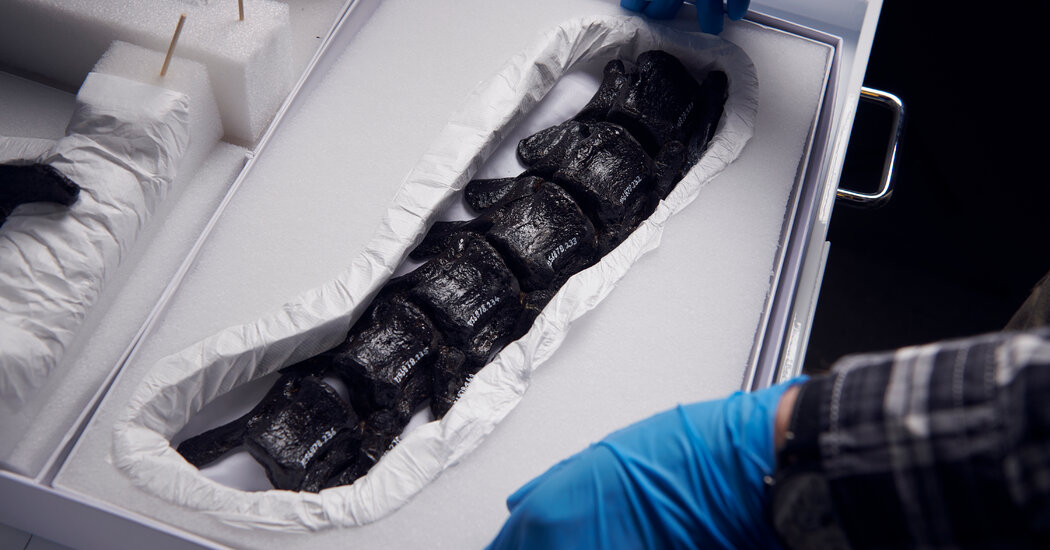The Australia Letter is a weekly newsletter from our Australia bureau. Sign up to get it by email.
In a long corridor at the back of the Melbourne Museum, Tim Ziegler slides open one of many metal drawers. Ziegler, the collections manager of palaeontology, pulls out a pristine white box, and out of that box he deposits into his palm something that looks like a lump of shiny coal about the size of a standard green grape.
“This is its baby toe,” he says, holding the fossil gingerly. “As far as we know, no one has ever seen one of these before in human history — a triceratops baby toe. You are about the 50th human to have ever seen this.”
The toe belongs to a triceratops that has been named Horridus (named after Triceratops horridus, the species to which Horridus belongs), the world’s most complete triceratops skeleton ever found, which will go on display at the Melbourne Museum sometime next year. It was discovered in Montana in 2014 and was acquired by the Melbourne Museum in 2020.
This year, it arrived in Melbourne in eight crates, and since then the team at the museum has been carefully cataloging each of the 266 bones that make up the skeleton, including the skull that is 99% complete and weighs 575 pounds. This work includes 3-D scanning of the fossils — a process that has allowed for them to make a plaster model of what would have been the dinosaur’s brain. When the dinosaur is put on display for the public, they’ll be able to touch the plaster cast, along with casts of the beast’s impressive horns. (I would personally like to request that the museum make gold pendant necklaces based on these horns and sell them in the museum shop. Guaranteed best seller.)
When the work of cataloging and studying is done, the skeleton will be displayed in the space that used to hold Wild, a beloved exhibit of taxidermy that was nonetheless extremely tricky from a curation and conservation perspective. “It was just really hard on the specimens,” said Dani Measday, the museum’s conservator and strategic collection manager. “My job is all about conservation and access, and those two things sit in direct opposition of one another, especially in the case of Wild.”
I was one of the people who was especially attached to Wild, and was incredibly sad to see it go. But now that I’ve spent some time in a room with Horridus (and seen its incredible baby toe!) I can say that it’s a welcome tradeoff to have something so awe-inspiring take over the space.
Here are this week’s stories:
The Australia Letter will be on hiatus for the next few weeks — look for its return on Jan 7.
Are you enjoying our Australia bureau dispatches?Tell us what you think at [email protected].
Like this email?Forward it to your friends (they could use a little fresh perspective, right?) and let them know they can sign up here.



